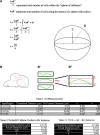Neurovascular congruence during cerebral cortical development
- PMID: 19386634
- PMCID: PMC2693536
- DOI: 10.1093/cercor/bhp040
Neurovascular congruence during cerebral cortical development
Abstract
There is evidence for interaction between the developing circulatory and nervous systems. Blood vessels provide a supporting niche in regions of adult neurogenesis. Here we present a systematic analysis of vascular development in the embryonic murine cortex and demonstrate that dividing cells, including Tbr2-positive intermediate progenitor cells, are closer to the vasculature than expected from a random distribution. To examine whether neurites of the newly generated embryonic neurons find blood vessels as an attractive and permissive substrate, we overlayed green fluorescent protein (GFP)-labeled dissociated cortical progenitors on embryonic organotypic cortical slice cultures with labeled vasculature. Our observations of neurites extending toward and along labeled blood vessels support the notion of vascular-neuronal interactions. The altered cortical layering had no obvious effect on the vascular patterns within the cortical plate (CP) in shaking rat Kawasaki (SRK) and the reeler mutant mouse at the ages studied (E19 and P3). It appears that similarly to other neurogenic regions in the adult, the embryonic "vascular niche" might influence neural progenitor cells during telencephalic neurogenesis, neuronal migration, and neurite extension, but the laminar phenotype of cell classes within the CP has limited influence on the developing vasculature.
Figures




References
-
- Aikawa H, Nonaka I, Woo M, Tsugane T, Esaki K. Shaking Rat Kawasaki (SRK) a new mutant in the wistar strain. Acta Neuropathol. 1988;76(4):366–372. - PubMed
-
- Beck L, Jr, D'amore PA. Vascular development: cellular and molecular regulation. FASEB J. 1997;11(5):365–373. - PubMed
-
- Carmeliet P, Tessier-Levigne M. Common mechanisms of nerve and blood vessel wiring. Nature. 2005;436(7048):193–200. - PubMed
-
- Carney RS, Bystron I, López-Bendito G, Molnár Z. Comparative analysis of extra-ventricular mitoses at early stages of cortical development in rat and human. Brain Struct Funct. 2007;212(1):37–54. - PubMed
Publication types
MeSH terms
Grants and funding
LinkOut - more resources
Full Text Sources
Molecular Biology Databases
Research Materials
Miscellaneous

